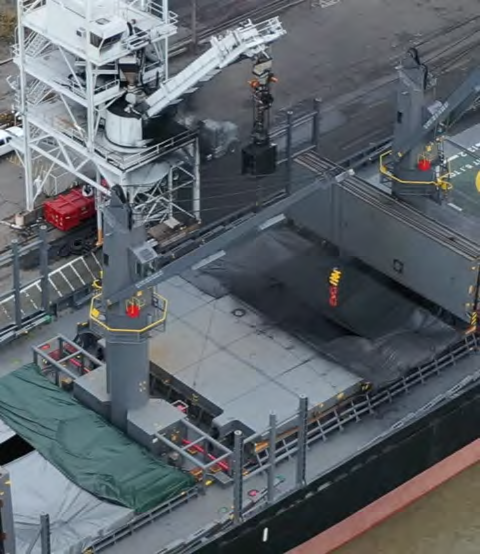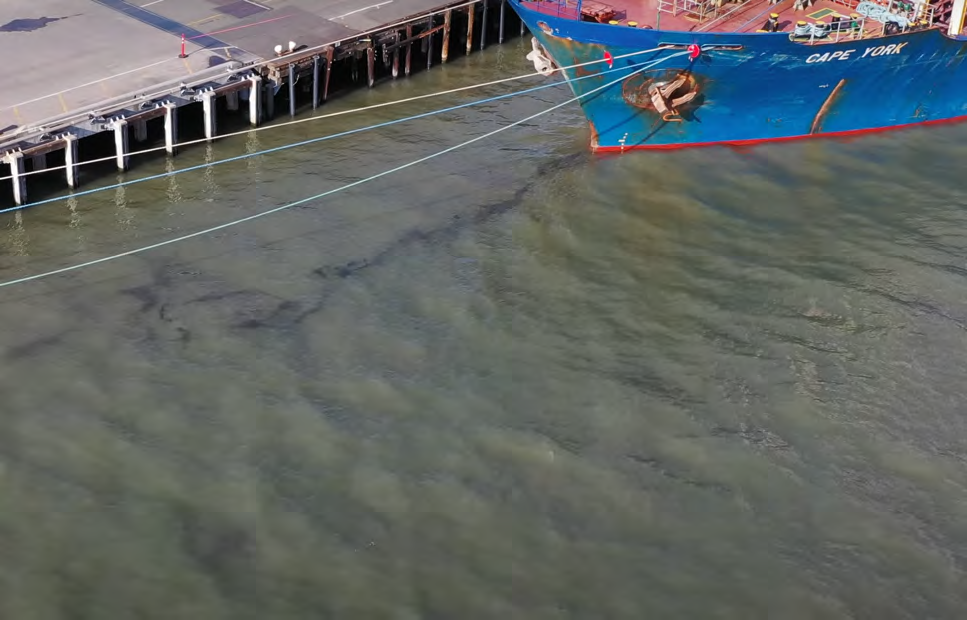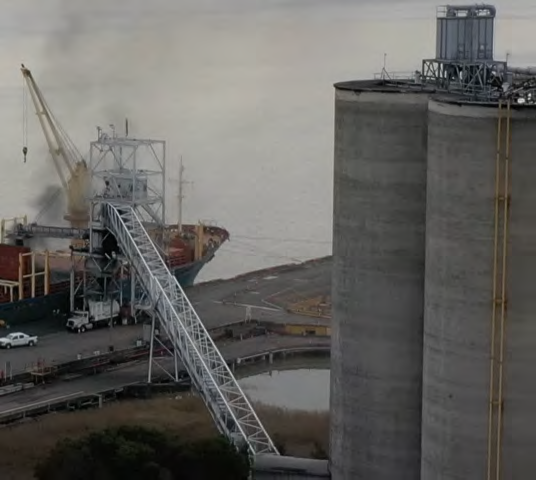
My name is Christina Gilpin-Hayes, and as you may have heard, I’m running for Benicia City Council. Before I tell you about my qualifications and why I’m asking for your vote, let me say that it has truly been an honor to run for Council. I have enjoyed every moment of this election season so far—meeting neighbors who have become friends, knocking on doors, and being welcomed into homes to listen to concerns and engage with our community members. It has been a rewarding experience that reinforces my commitment to serving our community.
I find joy in this process. Even neighbors who may not agree with me or are voting for another candidate have shared their stories and experiences with me. This is what community means to me. Even when we don’t agree, there is an opportunity to communicate.
Now, a bit more about me: I have a Bachelor’s Degree in Business Communication and Organizational Behavior, along with a background in law and finance. I was previously employed as a corporate paralegal supporting startup companies and large technology firms. I eventually moved into a leadership role at a large firm, managing a team of approximately 100. After a brief stint at an investment bank, I returned to law firm life, where I now manage a team developing legal tech software to make legal services more efficient and, hopefully, less expensive. In my professional life, I’vemanaged people and budgets, and I have experience making tough decisions when necessary. In my opinion, all of these responsibilities can be fulfilled with empathy, care, and creativity.
Personally, I am passionate about community organizing. I am the founder of the Benicia LGBTQIA Network and an avid animal rescuer. My wife and I moved to Benicia in early 2021 and instantly fell in love with this community; we knew it was home for us. I’ve always been politically and socially active, volunteering for multiple local, state, and federal campaigns over the years, including working on the legal Election Protection Team for two presidential elections to ensure voters had access to the polls across the country. I believe in the democratic process, and that’s just one of the reasons I’m running for Benicia City Council. I’d like to answer some of the questions I’ve encountered on the campaign trail in Benicia.
WHERE DO I STAND ON THE ISSUES?
I am in favor of Measures F, G, and H.
Measure F
I know our community is experiencing tax fatigue, and the city is asking us to contribute more. I understand; I really don’t want to pay more taxes either. However, with Measure F, we can contribute a small amount when dining out or purchasing items, which will help address some of our road issues. For an $80 dinner at Baxter’s, one of my favorite Benicia restaurants, the tax I will pay on that meal will increase from $7.30 to $7.70. I am comfortable paying the additional $0.40 to help the city start making a dent in the backlog of roads that badly need repair and repaving. I also appreciate that there will be a community oversight committee to ensure that this money is used as intended by voters. Additionally, even if Measure F passes, our tax rate will still be lower than many of our neighboring communities.
Measures G and H:
There is a lot of misinformation floating around about these measures, leading to confusion. I’ve met homeowners who thought that voting in favor of these measures would result in immediate reassessments of their homes. To be clear, that is not accurate. First, Measure H cannot be implemented without Measure G. A General Law City, which is what Benicia currently is, cannot implement a city transfer tax. If Measure H is approved, together with Measure G, it means real property sales will be assessed a city transfer tax, and while I understand the frustration with being asked to contribute more, this measure will enable the city to plan for the future. I’ve heard questions like, “Why didn’t the city anticipate this?” or “Why didn’t the previous council do something to ensure we could collect on X, Y, or Z?” This measure provides the city with that opportunity. It means when new developments occur, the city will receive a transfer tax, ensuring that new residents contribute to our beautiful community to fund city needs, such as necessary infrastructure, police, and fire. Additionally, if any commercial properties—yes, including Valero—ever sell, the city will receive funding from those sales. We want to avoid a situation where, in 2, 5, or 10 years, sales occur from new housing developments or a large commercial property, and the city has not planned for it.
What about budget cuts?
One thing is certain: we cannot cut our way to a balanced budget. This community has made its priorities clear, and public safety is a top concern. This means maintaining staffing levels for police and fire. To achieve this, we must compensate our public safety staff at a level consistent with neighboring communities. In my conversation with the Police Chief, he indicated that we have already lost five police officers in 2024 alone. While there will be opportunities to reduce staff in certain departments in the coming years, that alone will not bridge the budget gap.
We also cannot cut consultant fees as a way to balance the budget. Consultants provide efficient and cost-effective services without the long-term obligations that permanent employees require. Hired city staff require benefits and pension contributions. Consultants can be brought in when needed without those long-term commitments. Moreover, many items on the consultant list are supported by this community, such as automated license plate readers and the goats for vegetation management, among others. We could eliminate all of those and save quite a bit of money, but then would we hire full-time shepherds and purchase a herd of goats to cancel that contract, or do away with the Automated License Plate Readers that assist our Police Department, or even hire a team of full-time city attorneys with the appropriate specialties to replace our contracted City Attorney, which would also come with benefits and pensions? Additionally, some of the consultants the city has engaged over the past two years have helped ensure compliance with state housing requirements. The city does not maintain full-time staff to manage all of its needs, as doing so would inflate the budget far beyond the consultant fees we currently pay.
Relying on the termination of consultant contracts to find money to balance the budget or fix our roads is short-sighted and unrealistic.
Our Budget/Long-Term Economic Goals
These tax measures are not a magic solution; they are merely a starting point. We must continue to make significant plans, regardless of whether these measures pass. We need to focus on attracting new commercial opportunities, which means city leaders must identify ways to leverage relationships and encourage businesses to consider Benicia. This may involve collaborating with commercial property owners to assist in identifying potential businesses for vacant properties, particularly those that would generate sales tax revenue. Warehouses do not typically generate revenue for the city. My focus would initially be on our industrial park. While Main Street is the crown jewel of Benicia, it accounts for only about 7% of our total sales tax revenue. We should continue to support all our Main Street businesses, but initially, we should prioritize new commercial opportunities in the industrial park. This won’t be easy, but it can be achieved if we work together—city leaders, city staff, the Benicia Industrial Park Association, and the community at large. The time for the City Council to act is now. We must focus on what’s next for Benicia to diversify our revenue streams, which is essential for our city’s long-term financial health, and we must engage every voice to do what’s right for Benicia.
The Industrial Safety Ordinance
I believe we need a strong Industrial Safety Ordinance (ISO). We are the only refinery city in the Bay Area without one. City leaders would be doing a disservice to the community if they did not ensure Benicia’s long-term environmental safety in all industrial settings. I have read the draft ISO, the community comments, Valero’s comments, as well as Solano County’s comments. I hope the ISO can be implemented without litigation and that all interested parties can agree to prioritize the environment and public safety.
Other Issues
While these issues don’t necessarily touch the city directly, I think it’s important for you, the Benicia voter, to know where I stand:
- I am pro-choice. Since I turned 18, I have actively advocated for and defended a woman’s right to control her own body and decisions.
- I support marriage equality. I campaigned and canvassed with Equality California to overturn Prop 8 and am emphatically voting for Proposition 3, which will finally repeal Prop 8 language from the California constitution.
- I advocate for a living wage and will be voting “yes” on the state minimum wage proposition.
- While this isn’t necessarily a city, county, or state issue, as mentioned, I am an avid animal rescuer, and if you have a dog, I’m more than likely going to greet your dog first.
In Closing
Mayor Steve Young, Vice Mayor Terry Scott, and Council Member Kari Birdseye have provided invaluable information and support throughout this process, and I’m a better candidate for it. I am truly grateful for all of the current and former leaders of this city, as well as long-time Benicians, who have been willing to invite me into their homes and lives, talk to me, and share information.
If you watched the Benicia Chamber of Commerce candidate forum or attended any of my campaign events, you’ll know I don’t take myself too seriously. I smile a lot and genuinely find joy in my work, my life, and this campaign process. You might wonder if I have the chops to do this job if I’m cracking jokes. I assure you, I do. I am a leader in my industry and my community, and when it’s time to get down to business, I do so with ease—but always with a smile on my face.
I will champion Benicia and remain accessible to hear your concerns, even if we don’t agree. I hope you’ll take some time to get to know me, and I ask for your vote on November 5th or via your mail-in ballot.
Christina Gilpin-Hayes
christinaforbenicia.com
info@christinaforbenicia.com
The Benicia Independent and its Founder/Editor Emeritus, Roger Straw, have also wholeheartedly endorsed Christina Gilpin-Hayes for Benicia City Council. Her genuine passion for our amazing community, combined with her ability to connect with residents and listen to their concerns, truly sets her apart as the best candidate in this field. Christina is the right leader for Benicia.
This ad was first published in the Benicia Herald on October 19, 2024. The Herald does not have an online edition. Supporting local journalism is crucial for ensuring communities are informed and facilitates transparency and accountability during important local events like this one. You can subscribe to the Herald by email at beniciacirculation@gmail.com or by phone at 707-745-6838.

















You must be logged in to post a comment.